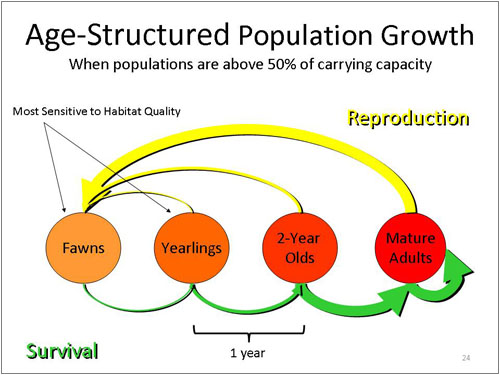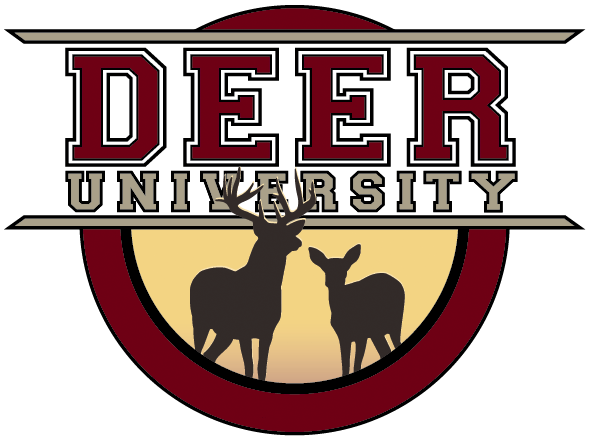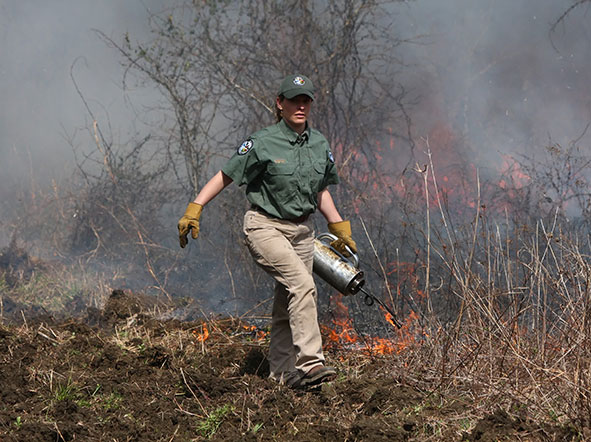Age-Structured Survival and Reproduction
The last topic we want to cover is age-structured reproduction, which is important to understand white-tailed deer population dynamics. Age-structured reproduction simply means that the reproductive rate varies by the age of the mother. In white-tailed deer, fawns rarely reproduce, except in regions with superior habitat quality (like the agricultural regions of the Midwest). In Mississippi, only about 10% of fawns are bred. Yearlings usually breed, but they typically give birth to a single fawn. Two-year-old does will give birth to two fawns when in good body condition and mature does (three years old and older) will typically give birth to two fawns and sometimes three.
When deer populations are low, and body condition is good, all four of these doe age classes will contribute fawns to the population. But as deer density increases, fawn reproduction stops and yearling reproduction decreases. As the deer population moves closer and closer to carrying capacity, 2-year-old doe reproduction and then > 3-year-old doe reproduction begins to decline rapidly. This relationship is generalized in Figure 22.
Of course, as with the previous graphs, the shape of these curves depends on habitat quality. In poor habitat quality, the decline in reproduction begins much sooner than in areas of superior habitat quality.
Another, and more complete, way of looking at this age-structured relationship is to include survival of deer as density increases. See in Figure 23 a conceptual model of how each age class contributes to reproduction (the weight/width of the line shows the relative reproductive contribution) in good habitat when the population is low.
Also keep in mind that fawns are actually contributing to reproduction in this scenario, but their offspring are born the following summer when they are classified as yearlings. Furthermore, note that survival of does in each class is high, so most of the animals in each age class survive and move to an older age class the following year.
Compare reproduction and survival in Figure 24 when either habitat quality is poor, or when deer populations are greater and approaching carrying capacity.
Notice the production of offspring by fawns and yearlings is very low, or even absent in some cases. Additionally, see how survival of younger deer (fawns and yearlings) is reduced. Younger deer are the most sensitive to habitat quality and environmental events, thus reproduction and survival of fawns and yearlings can be a good indicator of habitat quality, or deer density relative to carrying capacity.
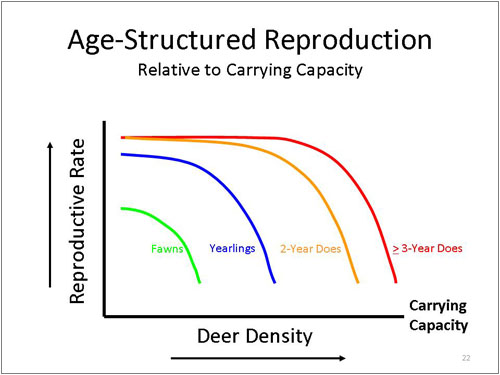
Figure 22. Age-Structured Reproduction
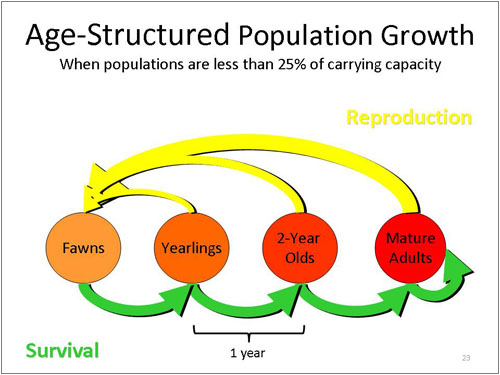
Figure 23. Age-Structured Population Growth
